In the latest installment of the Quality Matters series, our Q&A with Martin Kjærbo, UR’s VP of Operations and Supply Chain talks about UR’s quality vision, human-cobot collaboration on UR’s own production lines, and the importance of treating quality management as a process. Before joining Universal Robots, Martin Kjærbo held management positions within logistics/supply chain and engineering departments at other Danish companies well-known in the global market such as pump manufacturer Grundfos and wind turbine company Vestas.
Q: Can quality be defined?
A: High quality means pleasing consumers, not just protecting them from annoyances. Our definition of quality goes beyond just focusing on product features. We focus on life cycle costs that include expenditures on service and maintenance—the customer’s total costs. In our organization we talk about the “8 dimensions of quality” that are identified as a framework for strategic quality analysis and management; performance, features, reliability conformance, durability, serviceability, aesthetics and perceived quality.
When I think about quality, I ask ‘Do I get what I paid for? Do I get the desired output? Do I get the product I asked for and is it robust enough to do what I need it to do?’ As a manufacturer, it’s really about reducing variability in all our processes, making sure that we always hit the point where we have good products that work exactly as we said they would.
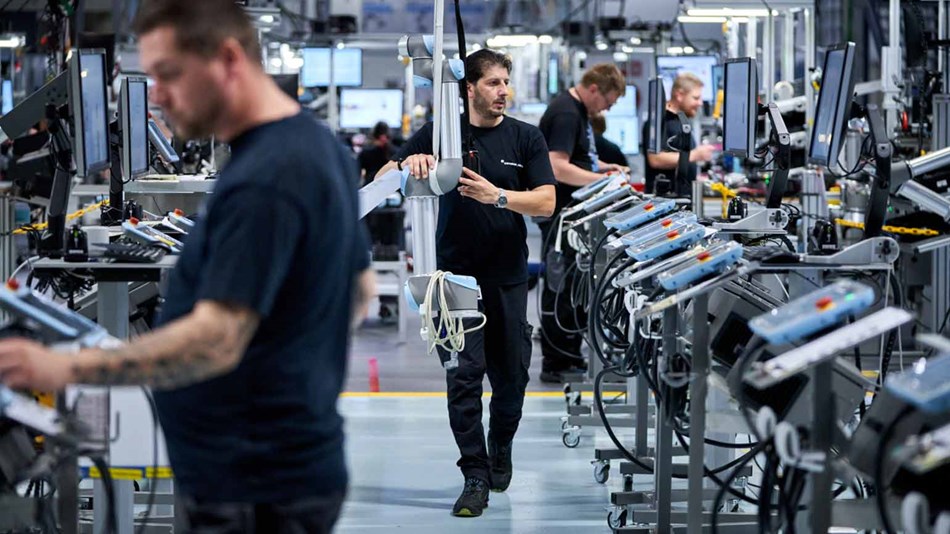
“We constantly look at how far ahead in time will our products be functioning at the desired level. We follow the cobots we send out at the customer sites to see if they are still reliable, if they are still repeatable, and whether they still perform to perfection,” says Kjærbo.
Reliability, for example, can be measured in terms of mean time to first failure, the mean time between failures, and the failure rate per unit time. We track this data and data like it across all eight categories to support continuous improvement in product quality. To drive these initiatives, we have several Six Sigma black belts colleagues and we deploy Kaizen Blitz – teams that work across our organization to look at specific improvement areas. We work very hard to attract the brightest and best engineers and were pleased to make Denmark’s Top 10 best engineering companies to work for in 2020.
Traditionally, quality has been seen as a problem to be solved or as a narrow effort to gain control of the production process. We see quality as a competitive opportunity and as a broad, ongoing process.
Q: Can you describe the quality process behind a UR cobot?
A: UR operates a three-step quality process based on the supplier, the factory and the customer. Each step has its own KPIs and performance percentages, which we regularly increase as part of our continuous improvement strategy. Quality cobots begin with quality components, so on the supplier side, we ensure that we rigorously test and verify all components that enter our manufacturing facility. We use some of the biggest suppliers in the electronics industry to make sure that the quality level is at the desired level for our cobots.
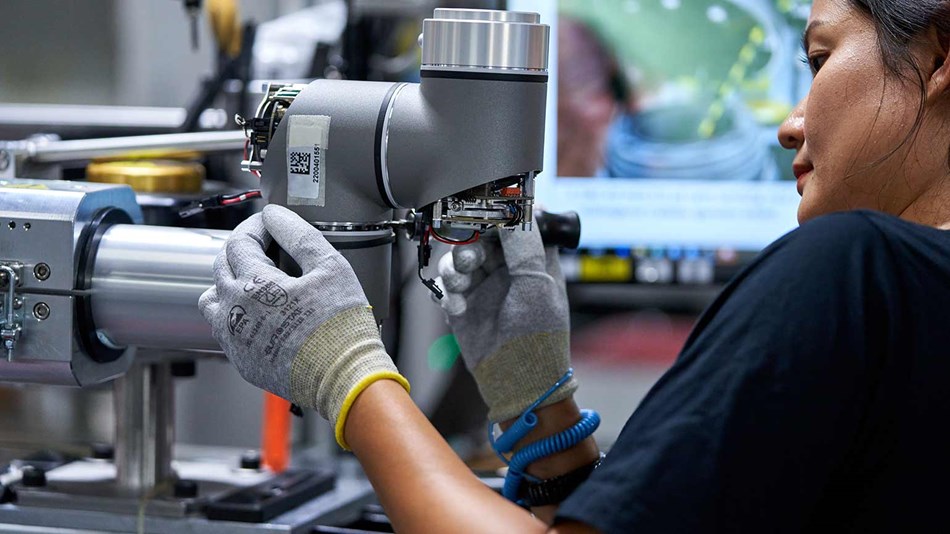
“From screws and components that have to be viewed under a microscope to the final finish of our cobot arm, we aim to achieve the level of perfection associated with Swiss watch manufacturing across all our production processes,” says Kjærbo.
It is in our factory that we have the most control over quality. Our employees, many of whom have been at UR since the company was founded, understand our cobots inside out, how each part should perform, and how it fits into the final product. The production line at UR has 81 different measurement points and test systems to ensure that every single process is completed to the required level. For example, every joint UR makes is tested for 19 hours before it’s assembled into the final cobot arm. At the end of the assembly line, we do more than three hours of testing on the full cobot arm, including safety, calibration and positioning tests. “Every cobot sold by UR is manufactured by human-cobot teams.”MARTIN KJÆRBOVP of Operations and Supply Chain, Universal Robots
On the customer side, we are extremely focused on learning how they use our cobots, how they actually put our cobots under pressure, and what types of novel applications they have discovered. And, of course, we follow our cobots on the market so that we can gain insights from our customers on the reliability, repeatability and overall quality of our products. We depend on the quality of our cobots internally too, of course, as all of our cobots are made by human-cobot teams.
Q: How do the UR cobots benefit from the human-robot collaboration on UR’s own assembly line?
A: Every cobot sold by UR is manufactured by human-cobot teams working in close proximity on the production line. This process has evolved gradually over the last five years. Back in 2015, our production was solely based on skilled, manual labor. However, when our sales doubled in one year, it became clear that this solution was untenable. Instead, we implemented a more lean-based production with identical assembly lines and cobot-assisted, phased operations with UR3 robots now handling the screw driving processes in the assembly of joint gears and flanges. It’s a very collaborative process with the operator, every second position on our assembly line in Odense, Denmark, is now a UR cobot.Previous
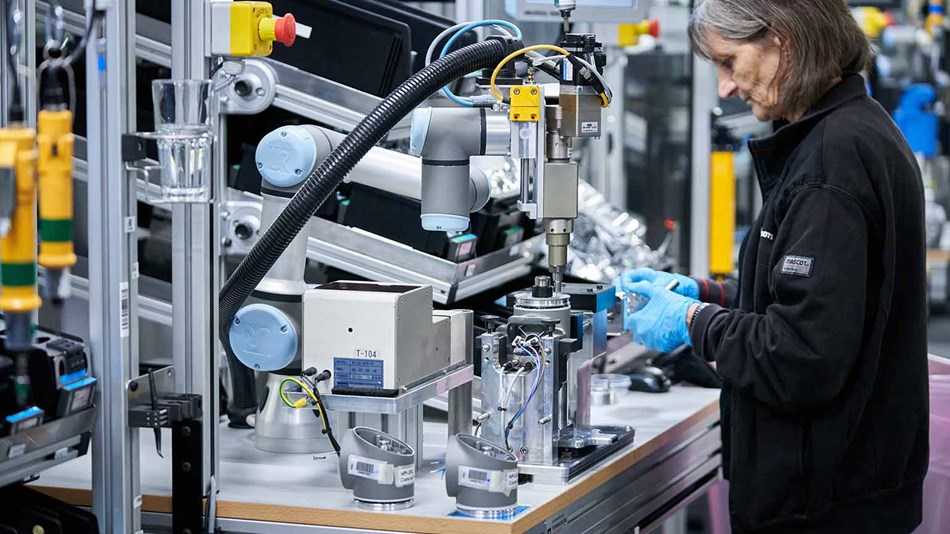
The UR3 measures, collects fresh supplies of screws and fastens the flange with 16 screws in a precisely defined cross-pattern, ensuring that the gear is correctly centered. The UR3 robot only takes about four minutes to assemble the 28 screws in a robot joint. The operator uses this time to prepare the next joint for assembly.
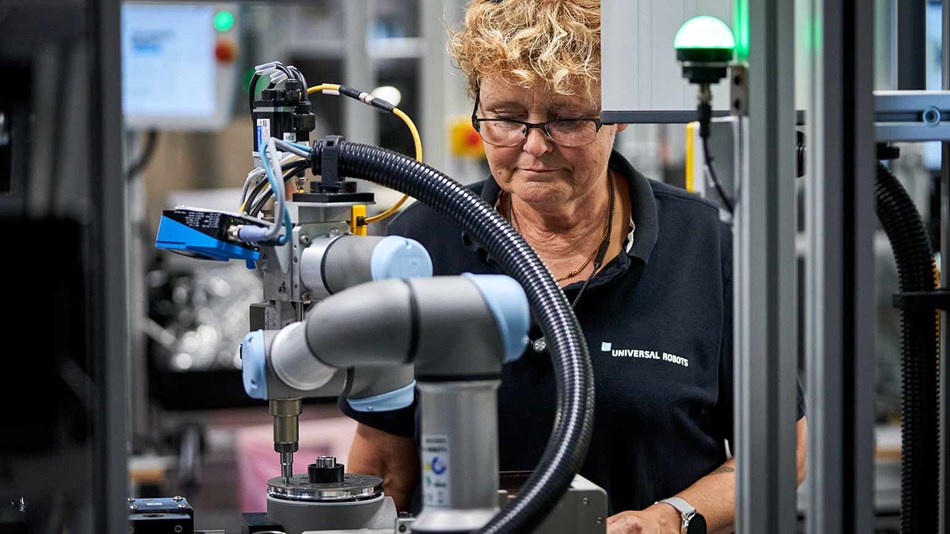
At the assembly line in Odense, Denmark, the UR3 steers the screw driver, inserting the screws in the cobot joints.
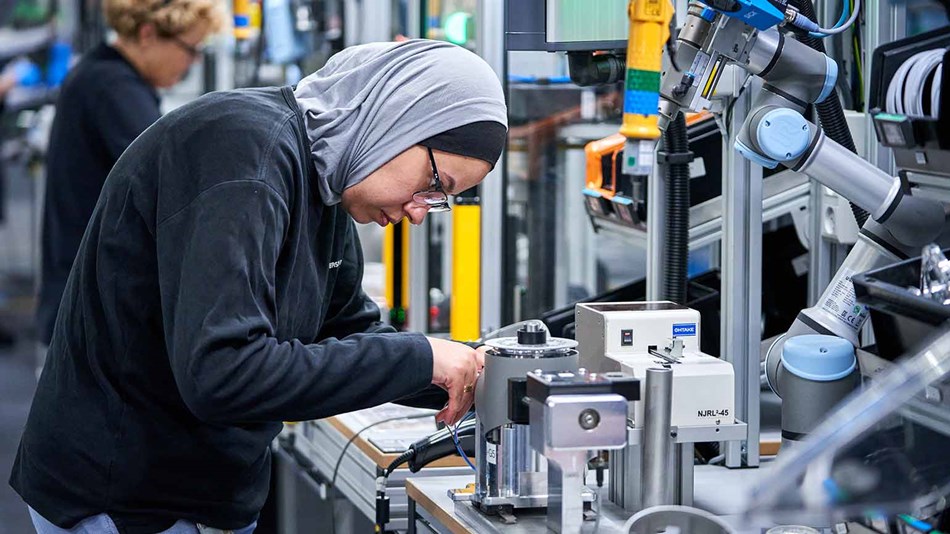
After this, the operator assembles plastic ring, flange and spindle manually and activates the robot again.

The UR3 measures, collects fresh supplies of screws and fastens the flange with 16 screws in a precisely defined cross-pattern, ensuring that the gear is correctly centered. The UR3 robot only takes about four minutes to assemble the 28 screws in a robot joint. The operator uses this time to prepare the next joint for assembly.

At the assembly line in Odense, Denmark, the UR3 steers the screw driver, inserting the screws in the cobot joints.

After this, the operator assembles plastic ring, flange and spindle manually and activates the robot again.

The UR3 measures, collects fresh supplies of screws and fastens the flange with 16 screws in a precisely defined cross-pattern, ensuring that the gear is correctly centered. The UR3 robot only takes about four minutes to assemble the 28 screws in a robot joint. The operator uses this time to prepare the next joint for assembly.Next
- 1
- 2
- 3
Using UR cobots to make UR cobots also means that we have a treasure trove of data that we can use to meet our continuous quality improvement targets. So, when I talk about the quality of UR cobots it’s not just an aspiration.
Q: What is unique about UR’s perspective on quality?
A: UR’s perspective on quality is unique in several respects because of our history, the popularity of our products and our global reach. UR is a pioneering robotics company, which means that over the past fifteen years, we have, to a considerable extent, defined and set the standard for what quality means for the entire cobot sector. In 2020, with 50,000 of our cobots installed worldwide –a quality endorsement in itself – UR has a global customer base that is unmatched. Our customers provide us with constant feedback on our products. “Simply put, UR has unique and unparalleled insight into the quality requirements of cobot users.”MARTIN KJÆRBOVP of Operations and Supply Chain, Universal Robots
Our customer base also shares insights on ingenious new applications that they have found for our cobots. We use these layers of feedback to ensure continuous improvement based on the real-world application requirements across our entire product range. Simply put, UR has unique and unparalleled insight into the quality requirements of cobot users. And our global reach, which grew massively following UR’s acquisition by our parent company Teradyne, ensures that we can continue to set high quality standards not just for ourselves and the wider industry, but for our suppliers too – all with the aim of providing end-users with a flexible, high quality cobot.
Every day we turn the lights on in our manufacturing facility and humans and cobots begin working together, it gives me great pleasure to see how diligently our employees work on making a better product. And, over time, like so many of our customers, we see the numbers adding up in terms of improved quality and increased production in our manufacturing processes. Every day is a constant journey of striving to doing better than we did yesterday. If we achieve that target, it’s been a good day and it’s a good preparation for tomorrow.
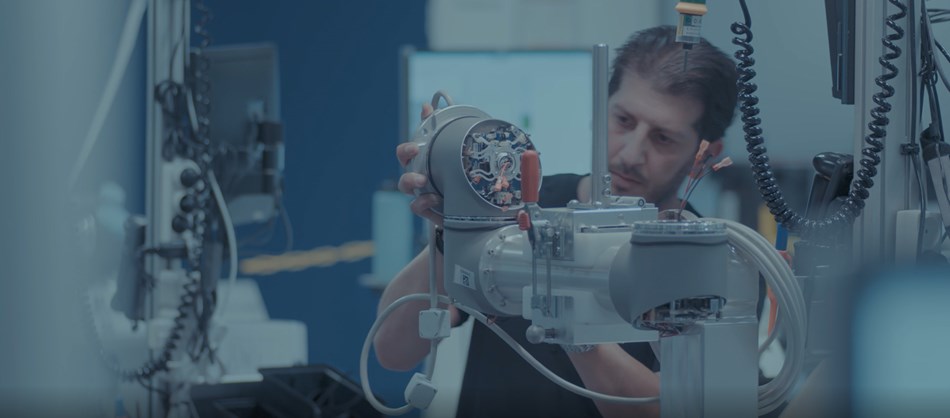
QUALITY MATTERS
Learn how UR cobots are helping companies improve quality and boost productivity.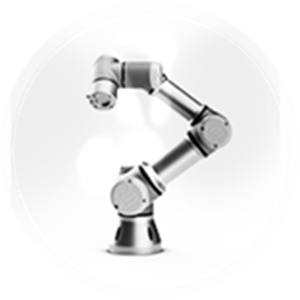
UNIVERSAL ROBOTS
We believe that collaborative robotic technology can be used to benefit all aspects of task-based businesses – no matter what their size.
We believe that the latest collaborative robot technology should be available to all businesses. The nominal investment cost is quickly recovered as our robotic arms have an average payback period of just six months.









